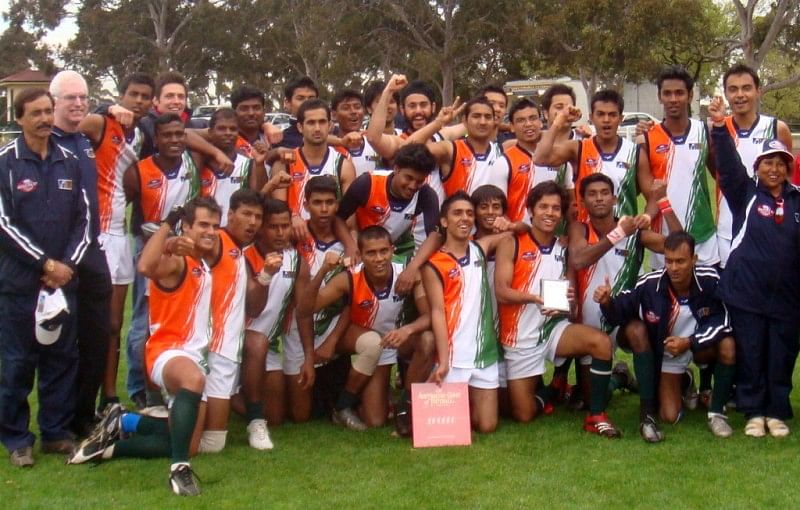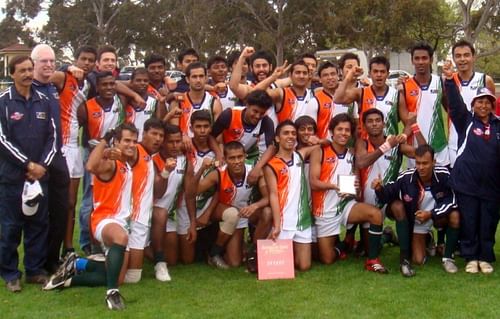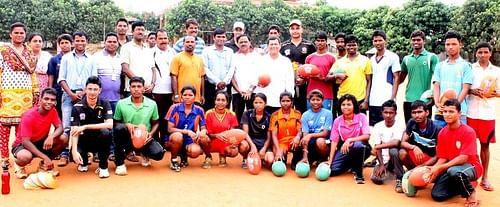
How Australia's most popular sport is liberating underprivileged communities in cricket crazy India
In 2008, Ricky Ponting was drafted in the Kolkata Knight Riders, aiming to lead the franchise to IPL success in its inaugural season. However, punter’s time with the team will not only be remembered for his cricketing exploits. Ponting helped introduce the country to a new sport that has captured Australia’s imagination for the past five decades.
Australian rules football or better known as Aussie rules, has slowly, yet steadily carved a prolific niche for itself within India’s sporting landscape. The sport first arrived on Indian shores through an exchange programme between both countries. Indian people were introduced to ‘footy,’ and Australians were taught the basics of Kabaddi. Both sports have glaring similarities, in terms of technicality.
Baby steps in to India’s sporting mindspace
That very year, Ponting, a huge Aussie rules fan, volunteered to be the sport’s ambassador in India. The programme encouraged various sportspersons from different fields, to give it a shot. Current Indian Captian, Sudip Chakraborty was one of those initial 100 players, who took the Aussie plunge.
He said, “I actually heard about it from friends first. I used to be an avid football player, and heard that there is an advantage for tall people in the sport. So I went, since then I haven’t looked back.”
Under the supervision of Australian Football League (AFL) legend Brett Kirk, a national team was formed within six months. The target was to secure a victory at the AFL International Cup, an tri-annual amateur event with 18 countries participating.
Sudip added, “this is was a big tournament for us, we didn’t win anything, but the experience of playing against countries with footy heritage like New Zealand, Samoa and Japan was inspiring. We also had the privilege to see a rare event of one player score 100 goals in a season, live. So it helped us a lot, and a bunch of us decided this is what we want to do.”
But, upon their return, the programme had officially shut-down, and the initial explosion of interest was all but dead. It took the group two years to gain official AFL license, after which the Australian Rules Football Association of India (AFL India) was setup.
In 2010, all the national team players were solely from West Bengal. The association’s goal was to create awareness about the sport, across all Indian states. They tied up with sports-based NGO Magic Bus, to educate young kids about the sport.
Within a year, states such as Maharashtra and Kerala, had small setups to produce talent for the national team.
India’s landmark Aussie Rules moment came in 2011, when the national team defied all the odds, to register their first and only international victory. The win came against East Timor, a small Micronesian country, which has a massive Australian influence. During the same time, Sudip flew down to Europe to study sports management.
He said,”this was pivotal for me as I wanted to learn how to develop AFL in India. The techniques I learned there are helping us grow the sport now.” And boy, has the sport grown! Within two years, states such Rajasthan, Jharkhand, Karnataka, Tamil Nadu and Odisha had jumped on board, with national championships being conducted every year.
The sport, which had only 20 active players, now boasted of 1,000 players, who were looking to turn professional in the sport.
Educating childern from poor families about the sport
Despite such interest within the sport, funding remains the biggest problem. Sudip added, “We are currently in a huge crisis as close to $40,000 by the Australian Sports Commission is lying with the Ministry. For close to 14 months, we haven’t paid our salaries, and the national championships are being organised on loans. The Ministry wants all security details from Australia, before the money is transferred. However, AFL says, if India were to invest in Australia, they wouldn’t do the same. Close to Rs 21 lakhs, which could have helped us build more infrastructure.”
Tom Calder, the Australian Trade Commissioner to India has been avidly supporting the sport for the last couple of years, during his free time. Other finances were sourced via personal loans. He said, “People forget we aren’t a charity, we are a goal oriented sports association. We need to spread the sport, people should know how there is massive potential.”
The recently concluded National Championship in Kolkata highlighted the existent talent base. West Bengal won the Senior category, and Jharkhand the junior. With close to 200 players, this is was definitely the best turnout so far.
Gavin Crosisca, a AFL legend present at the tournament said, “The unique thing about India is that the sport is locally driven. If you were to go to other countries, the sport is driven by expats, with a lot of them an integral part of the team. But in India, the players are all from here and are working really hard. I can definitely see some an Indian in the AFL soon. But, it’s important that the sport is grown in the correct manner. Talent is there.”
However, AFL India’s role is not solely restricted to just spreading awareness about the sport. In fact, they have gone a long way in empowering underprivileged communities in India.
Sudip added, “Most of the players in India are from lower income backgrounds. Hence, we help them sustain themselves within the sports. We, along with Magic Bus, make sure these kids are well groomed, so that they can tackle future problems well. However, lack of funding could be a problem In fact there was a young lad from Jharkhad named Mahesh Tirkey, he never even heard of the sport. But the day he learned the sport, we knew he was going to make it big. Within months he became our best player in the International Cup, he also comes from a tribal background.”
AFL India is focusing on growing the sport, where they have managed to nurture the best talent. Places such as the Bengal-Bangladesh border, tribal areas in Jharkhand and Odisha, have proved very fruitful for them. In fact, now 75 % of the team is from the tribal belt.
The Bengal Olympic Association is on the verge of granting the sport its legitimacy, whereas Odisha already has. AFL India is looking forward to legitimise the sport in Bengal following the support it received from the CMO & Sports Ministry of the state to conduct this year's National Champs.
Sudip said, “Our main goal is to garner seven functioning state associations, so that we can become a part of the Sports Authority of India (SAI). Right now we are focusing on Bengal, Jharkhand and Odisha as a lot of talent is coming from here. Soon, we will expand and make sure all these good young kids from poor families can get government jobs to sustain themselves, like rugby players in Odisha are getting.
The sport so far has shown enough positive qualities to create a space for itself. The people involved are motivated and the only direction for ‘footy’ in India is up!

